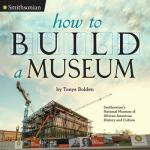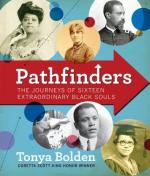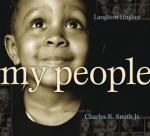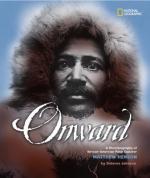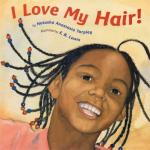July 25, 2018 | Boydl
The books below are part of an extensive collection as compiled by Dr. Jonda S. McNair, professor of literacy education at Clemson University in South Carolina.
Traces legal clerk Arturo Schomburg's efforts to curate a collection of African books, letters, music, and art.
Profiles sixteen high-achieving African Americans, including magician Richard Potter, concert singer Sissieretta Jones, and architect Paul R. Williams.
A fictionalized account of Zora Neale Hurston's childhood with her best friend Carrie, in Eatonville, Florida, as they learn about life, death, and the differences between truth, lies, and pretending. Includes an annotated bibliography of the works of Zora Neale Hurston, a short biography of the author, and information about Eatonville, Florida.
Celebrates the magnificent feeling that comes from walking out of a barber shop with newly-cut hair.
Hughes's spare yet eloquent tribute to his people has been cherished for generations. Now, acclaimed photographer Smith interprets this beloved poem in vivid sepia photographs that capture the glory, the beauty, and the soul of being a black American today.
In this retelling of a folktale, a group of slaves, unable to bear their sadness and starvation any longer, calls upon the African magic that allows them to fly away.
"A picture book look at many of the men and women who revolutionized life for African Americans throughout history"--.
Presents the life of the artist, who was inspired as a child by a book of anatomy given to him by his mother after being injured in a car crash and who went on to become a celebrity in the art world before his early death at twenty-eight.
March is a vivid first-hand account of John Lewis' lifelong struggle for civil and human rights, meditating in the modern age on the distance traveled since the days of Jim Crow and segregation. Rooted in Lewis' personal story, it also reflects on the highs and lows of the broader civil rights movement. Book One spans John Lewis' youth in rural Alabama, his life-changing meeting with Martin Luther King, Jr., the birth of the Nashville Student Movement, and their battle to tear down segregation through nonviolent lunch counter sit-ins, building to a stunning climax on the steps of City Hall.
Using an "Everyman" player as his narrator, Kadir Nelson tells the story of Negro League baseball from its beginnings in the 1920s through the decline after Jackie Robinson crossed over to the majors in 1947. Illustrations from oil paintings by artist Kadir Nelson.

